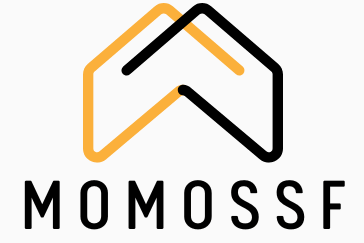In a world where communication is key, mastering language skills can feel like trying to juggle flaming torches while riding a unicycle. But fear not! A language skills checklist can be your trusty safety net, ensuring you don’t end up in a verbal circus act. Whether you’re aiming to impress at a job interview or just want to sound less like a toddler at a spelling bee, having a clear roadmap is essential.
Table of Contents
ToggleOverview of Language Skills Checklist
A language skills checklist serves as a structured guide to assess and enhance proficiency in multiple areas of communication. It may include various components such as speaking, listening, reading, and writing skills. Each aspect of language skills plays a crucial role in effective interaction.
To evaluate speaking skills, consider clarity and fluency. Effective speakers articulate thoughts clearly and engage their audience. Listening skills involve active comprehension, which means understanding spoken language and responding appropriately. Reading proficiency encompasses the ability to comprehend and analyze written materials. Strong readers extract meaning, allowing them to engage with complex texts.
Writing skills focus on structuring ideas clearly and coherently. Organizing thoughts in a logical progression ensures that written communication remains impactful. Additionally, using correct grammar and vocabulary fosters professionalism in written exchanges.
Incorporating self-assessment and feedback from peers can enhance the checklist’s value. A comprehensive language skills checklist allows individuals to identify strengths and target areas for improvement. Setting measurable goals based on this checklist encourages continuous development.
Efforts to master language skills resonate across various contexts, whether in personal or professional communications. Many find that regular practice and reflection facilitate growth and confidence in their language abilities. Using a checklist simplifies tracking progress and adjusting learning strategies as needed.
Importance of Language Skills Checklist
A language skills checklist plays a vital role in developing effective communication. It offers a structured approach to improve various language abilities.
Enhancing Communication Abilities
Improved communication starts with understanding the different components of language skills. Fluency in speaking promotes confident interactions. Listeners sharpen their understanding by actively engaging with the material. Written expression conveys thoughts clearly, allowing for effective sharing of ideas. An organized checklist helps individuals prioritize which skills need attention. Regular use of this checklist helps identify specific strengths and weaknesses, leading to targeted practice.
Supporting Language Development
Language development hinges on consistent evaluation and practice. By utilizing the checklist, individuals can track progress over time. They may find specific areas of difficulty that require more focus. Identifying these challenges enables tailored learning strategies. Peer feedback adds a valuable perspective, reinforcing learning through collaboration. This approach nurtures confidence in language abilities, fostering a proactive attitude toward growth.
Key Components of a Language Skills Checklist
A language skills checklist encompasses essential components that aid in effective communication. Each skill plays a distinct role in mastering language proficiency.
Listening Skills
Active listening forms the foundation of effective communication. It involves not only hearing but understanding and interpreting a speaker’s message. Practicing summarization, identifying key points, and asking clarifying questions enhances listening abilities. Regular evaluation of comprehension during conversations or while consuming media reinforces these skills. Tracking progress through careful reflection on interactions promotes improvement.
Speaking Skills
Clarity and fluency characterize strong speaking skills. Articulating thoughts clearly contributes to successful exchanges. Practicing pronunciation, expanding vocabulary, and using varied sentence structures enhance expressive capabilities. Engaging in conversations often, whether with peers or in structured settings, cultivates confidence. Monitoring performance through recordings or self-assessments helps identify areas needing improvement, guiding targeted practice.
Reading Skills
Reading skills encompass the ability to analyze and comprehend texts. Identifying main ideas, making inferences, and recognizing organizational patterns enhance understanding. Regularly engaging with various genres strengthens overall reading abilities. Creating summaries or discussing content with others promotes critical thinking. Evaluating comprehension through quizzes or reflective journaling can provide insight into which areas require additional focus.
Writing Skills
Structured writing effectively conveys ideas and intentions. Clarity in organization, grammar, and mechanics plays a crucial role. Practicing different forms of writing, such as essays or emails, builds versatility. Incorporating feedback from peers enhances one’s ability to express thoughts more clearly. Regularly reflecting on personal writing through revisions reinforces learning and identifies specific skills needing improvement.
How to Use a Language Skills Checklist
A language skills checklist acts as a practical tool for assessing and enhancing communication abilities. By following specific steps, individuals can make the most of it.
Assessing Proficiency Levels
Evaluating current language skills involves a systematic review of speaking, listening, reading, and writing. Begin by self-assessing proficiency in each area, using specific criteria from the checklist. Consider noting strengths and weaknesses to identify where improvements are needed. Peer assessments add another layer by providing external feedback, creating a more comprehensive understanding of language capabilities. Regularly revisiting this assessment enables tracking of development over time. Combining self and peer evaluations leads to a well-rounded perspective on proficiency levels.
Setting Language Goals
Establishing clear, attainable language goals enhances the effectiveness of learning. Start by analyzing results from the proficiency assessment to determine specific skill areas that require focus. For instance, setting a goal to improve vocabulary or enhance clarity in speaking provides direction. Break these larger goals into smaller, manageable objectives, allowing for progress tracking. Utilizing the checklist facilitates regular updates as individuals achieve milestones. Frequent goal review ensures adaptability, aligning learning efforts with ongoing needs and aspirations in language proficiency.
Mastering language skills is essential for effective communication in various aspects of life. Utilizing a language skills checklist empowers individuals to systematically assess and improve their proficiency. By focusing on speaking, listening, reading, and writing, it provides a clear framework for targeted practice. Regular self-assessment and peer feedback enhance the learning experience, fostering a collaborative environment for growth.
This proactive approach not only builds confidence but also allows for ongoing adjustments to learning strategies. With consistent use of the checklist, individuals can achieve their language goals, ensuring they communicate effectively and confidently in any situation.






